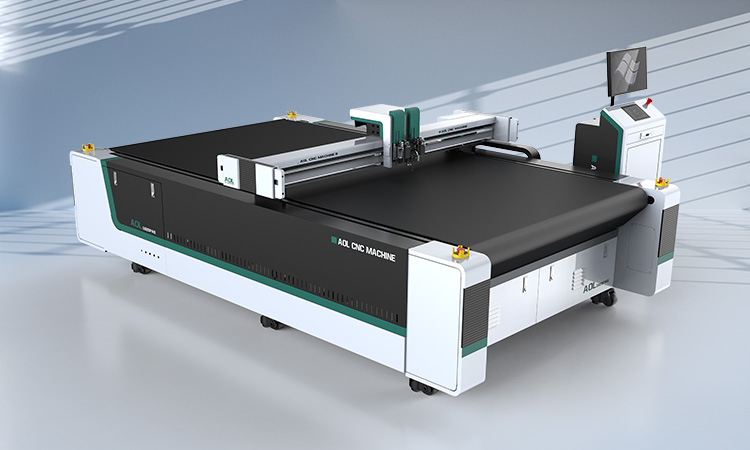Gaskets are necessary components in mechanical systems used to seal between two or more surfaces to prevent leaks and maintain pressure or vacuum. The most common application of gaskets is in pipelines, where they seal various joints to control spills of oil, natural gas, or other substances. A gasket cutter is an industrial cutting tool used to manufacture gaskets of different shapes and sizes for a variety of applications including automotive, aerospace, marine, chemical, oil and gas industries.
What are the functions of gaskets?
Gaskets are mechanical seals made of compressible materials such as rubber, silicone, cork, graphite or metal that are resistant to temperature, pressure and corrosive media. The function of a gasket is to prevent liquid or gas from leaking between two or more surfaces that are bolted or flanged together. For example, in automobile engines, gaskets seal the gap between the cylinder head and engine block, preventing coolant from leaking or oil from mixing with the coolant. Washers are critical to the proper operation and longevity of machinery as they prevent contamination and minimize wear.

What is a gasket cutter and how does it work?
A gasket cutter is a specialized tool that uses a variety of cutting methods to quickly and accurately manufacture gaskets. Unlike traditional cutting tools like scissors, knives, or saws, gasket cutters use precision blades that allow them to cut gaskets in a variety of shapes and sizes. This equipment uses computer graphics, processes internal data and transmits it to the machine control card. The control card then sends command pulse signals to the servo drive. The drive drives the servo motor to move the machine, and at the same time sends signals to the cutting tool. Perform cutting action on raw material.

How is a gasket cutter different from a regular cutter?
While traditional cutting tools can cut some gasket materials, they don’t have the versatility and precision that gasket cutters offer. For example, scissors can cut a piece of rubber but cannot accurately cut complex shapes or small sizes. Gasket cutters, on the other hand, can consistently produce gaskets of any shape, size, or material, allowing them to create custom gaskets that fit a specific application or machine. Gasket cutters are faster, more efficient, and safer than traditional cutting methods because they require no physical labor and do not expose the operator to sharp blades or hazardous materials.
Gasket cutters have many benefits for industrial, construction and engineering applications. They provide accurate, customized, cost-effective solutions for sealing machinery and systems. By automating the gasket cutting process, these machines reduce material waste, increase productivity and efficiency, and improve the consistency and quality of the final product. They also increase safety by minimizing physical labor and exposure to hazardous materials like asbestos. Most importantly, gasket cutters are essential to ensure optimal performance, longevity and reliability of equipment and machinery in various fields.
What factors should you consider when choosing a gasket cutter?
The choice of a gasket cutter depends on several factors. The first factor to consider is the type of material being cut. Different materials have varying degrees of hardness and thickness, which may require other cutting systems and blade types. The second factor is yield. High-volume production requires machines with higher cutting speeds and larger cutting beds. The third factor is the accuracy of the cut. Industries such as aerospace and defense require high precision, and machines with higher resolution would be ideal. Other factors to consider include cost, maintenance requirements and availability of spare parts.
How to use a gasket cutting machine to cut different gasket materials?
Different gasket materials require different cutting techniques. Hard materials such as plastics and rubber often require higher cutting speeds and greater pressure. Softer materials such as cork and paper require slower cutting speeds and lower stresses. Cutting tools should be adjusted accordingly to obtain the best results based on the material being processed. Gasket cutting machines should have a variety of customization options that allow the operator to vary cutting pressure and speed based on the characteristics of the material.
How to maintain gasket cutting machine to ensure service life?
Regular maintenance is critical to maintaining the long-term functionality of your gasket cutter. Keeping the cutting head clean is necessary to avoid sticking or tearing material. Most importantly, regular inspection of loose or worn parts is critical to safety and machine productivity. Depending on use and wear, blades should be sharpened or replaced frequently. Any problems with the machine should be reported immediately to the manufacturer or an experienced technician. Finally, adhering to a regular lubrication schedule ensures smooth operation and extended service life of your machine.
For more information, please consult:
Email: info@aolcnc.com
Phone: +86-531-88620680
WhatsApp/We Chat: 0086-18560162709
youtube: https://www.youtube.com/channel/UCDiNQSjBR5DsAX9QfkWF7AA
Website: https://www.aolcutcnc.com/







 No.5789, Yushan Road, Jinan City, Shandong Province, China
No.5789, Yushan Road, Jinan City, Shandong Province, China +86 18560162709
+86 18560162709 250109
250109








